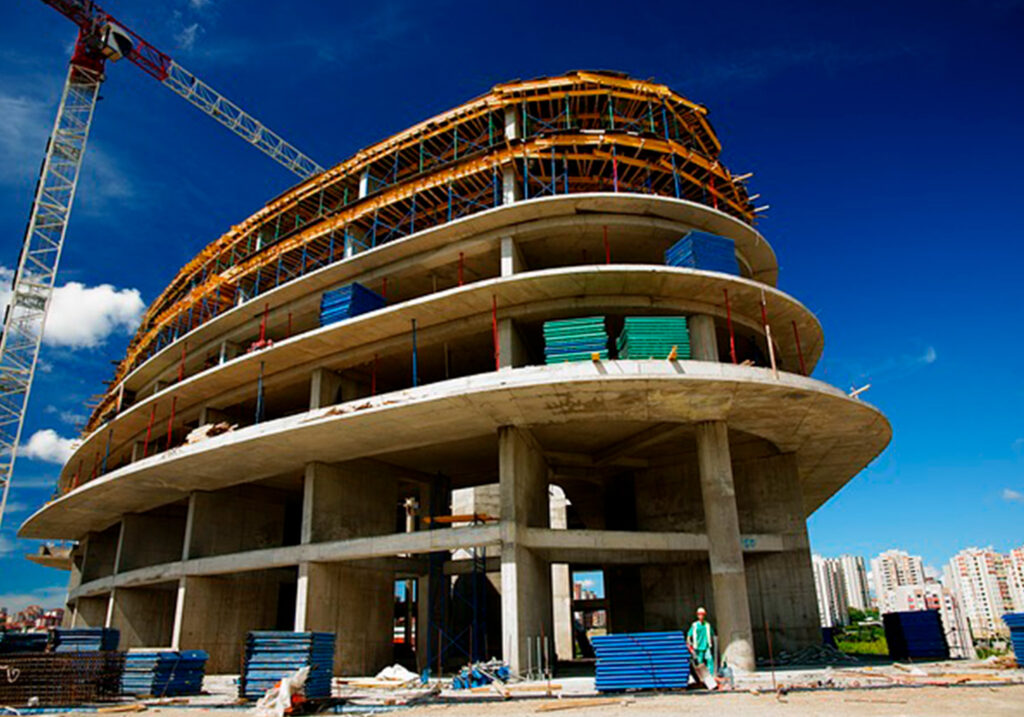Understanding building classifications and occupancy ratings is essential for ensuring the safety, functionality, and compliance of any structure. One critical classification is the Normal Human Occupancy Rating, a standard that helps determine how buildings are designed, constructed, and maintained to support the intended number of occupants safely.
In this article, we will delve into the concept of normal human occupancy rating, its significance, factors influencing it, and how it impacts building design and regulations.
Definition of Normal Human Occupancy Rating
The Normal Human Occupancy Rating refers to the maximum number of individuals a building or space is designed to accommodate under standard operating conditions. This rating takes into account various factors, including the building’s intended purpose, total square footage, ventilation capacity, available amenities, emergency exits, and overall safety systems. The primary objective of this rating is to ensure that the space can comfortably and safely support its occupants without compromising health, comfort, or emergency preparedness.
This rating is particularly significant for a wide range of buildings, including residential homes, commercial establishments, office buildings, educational institutions, and public venues such as theaters and auditoriums. Each type of building will have specific criteria and guidelines to determine its occupancy rating, reflecting the unique needs and risks associated with different environments. For example, a school will have different occupancy considerations compared to a factory or a retail store, based on the nature of activities taking place and the demographic of the occupants.
It is important to distinguish the Normal Human Occupancy Rating from temporary or emergency occupancy ratings. While the normal rating applies to everyday use, temporary ratings might allow for higher occupant loads during special events, public gatherings, or emergencies. These temporary allowances are usually accompanied by additional safety measures and are not intended for prolonged periods. Understanding these differences helps building managers, architects, and regulatory authorities maintain safe and functional environments for all occupants.
Importance of Normal Human Occupancy Rating
The normal human occupancy rating is crucial for several reasons. Firstly, it ensures occupant safety by determining the maximum capacity a structure can handle without overburdening its structural integrity, ventilation systems, and emergency exits. Overcrowding can lead to increased risks of accidents, fire hazards, and inadequate evacuation during emergencies. In commercial spaces, for instance, exceeding the occupancy limit can result in blocked pathways, delayed emergency responses, and heightened stress levels among occupants, all of which can compromise overall safety.
Secondly, the rating significantly impacts building design and construction. Architects and engineers rely on occupancy ratings to shape space layouts, define structural load requirements, and size critical systems like HVAC (heating, ventilation, and air conditioning). These ratings help ensure that every room or area within a building maintains appropriate air quality, temperature control, and structural support for its intended number of occupants. Proper adherence to occupancy ratings not only promotes efficiency but also enhances comfort, contributing to a more productive and pleasant environment.
Lastly, normal human occupancy ratings are vital for regulatory compliance. Building codes and safety regulations, such as those set by the International Building Code (IBC) and local authorities, mandate strict adherence to specific occupancy limits to safeguard public welfare. Failure to comply with these regulations can result in legal consequences, including fines, revocation of business licenses, or even the forced closure of facilities. Regular inspections by authorities often include checks on occupancy compliance, emphasizing the importance of maintaining accurate and up-to-date occupancy records to avoid penalties and ensure continued operations.
Factors Influencing Normal Human Occupancy Rating
Several factors contribute to determining a building’s normal human occupancy rating:
- Building Use and Function: The intended use of the building significantly affects its occupancy rating. For example, a classroom, which requires more personal space per occupant, will have a lower occupancy rating compared to a theater where seating is tightly arranged.
- Square Footage and Layout: The total floor area and room layout influence how many people can comfortably occupy a space. Open floor plans may allow for higher occupancy, while partitioned areas reduce available space per person.
- Ventilation and Air Quality: Adequate ventilation is necessary to maintain air quality and prevent health issues associated with overcrowding. Buildings with advanced HVAC systems may support higher occupancy levels compared to those with limited ventilation.
- Emergency Exits and Egress: The number and size of emergency exits directly impact occupancy ratings. Buildings must have sufficient egress routes to ensure safe evacuation in case of emergencies.
- Structural Capacity: The strength and stability of the building’s structure determine how much weight, including occupants and equipment, it can safely support.
- Fire Safety Systems: The presence of fire alarms, sprinklers, and other safety systems also influence occupancy ratings. Enhanced safety features may allow for higher occupant capacities.
Occupancy Classifications and Categories
Building codes often classify occupancies into different categories, each with specific requirements and occupancy ratings. Some common classifications include:
- Residential Occupancy: Includes single-family homes, apartments, dormitories, and hotels. These spaces typically have lower occupancy ratings to ensure comfort and privacy.
- Commercial Occupancy: Encompasses offices, retail stores, and restaurants. Occupancy ratings vary based on the type of business and customer flow.
- Assembly Occupancy: Refers to spaces where people gather for events, such as theaters, auditoriums, and stadiums. These have higher occupancy ratings but must adhere to strict safety regulations.
- Educational Occupancy: Includes schools, colleges, and daycare centers. Occupancy ratings ensure that students and staff have sufficient space and safety measures.
- Industrial Occupancy: Covers factories, warehouses, and manufacturing plants. Occupancy ratings consider the presence of machinery and hazardous materials.
- Healthcare Occupancy: Hospitals, clinics, and nursing homes fall under this category. Occupancy ratings prioritize patient care and emergency readiness.
Calculating Normal Human Occupancy Rating
To calculate the normal human occupancy rating, several steps are followed:
- Determine the Building Use: Identify the primary function of the building to apply the appropriate occupancy classification.
- Measure the Floor Area: Calculate the total usable floor area in square feet or meters.
- Apply Occupant Load Factors: Use standardized occupant load factors provided by building codes (e.g., 15 square feet per person for assembly areas without fixed seats).
- Assess Safety Systems: Consider the number of exits, egress routes, and fire safety systems to ensure they meet code requirements for the calculated occupant load.
- Consult Local Codes and Regulations: Verify calculations against local building codes, which may have specific requirements or adjustments based on regional factors.
Impact on Building Design and Operations
The normal human occupancy rating has a profound impact on both the design and operation of buildings. For architects and designers, this rating serves as a foundational guideline when determining the layout and spatial configuration of a structure. It dictates the appropriate room sizes, corridor widths, and the number and placement of exits to ensure safe and efficient movement of people within the building. Additionally, the occupancy rating influences the sizing of mechanical systems, such as HVAC units, to provide adequate air circulation, temperature control, and indoor air quality, all of which contribute to the comfort and health of the occupants.
In terms of structural considerations, the occupancy rating affects the load-bearing capacity requirements of floors, staircases, and other key components. Engineers must account for the weight of the maximum number of people the space is expected to hold, along with any additional equipment or furniture. This ensures the building’s structural integrity is maintained under normal usage conditions. Furthermore, fire safety measures, including sprinkler systems, fire alarms, and emergency lighting, are designed based on occupancy ratings to ensure rapid and safe evacuation in case of emergencies.
For building operators and managers, understanding and adhering to occupancy ratings is crucial for efficient daily operations. These ratings inform cleaning schedules, maintenance routines, and resource allocation, ensuring that facilities are well-maintained and comfortable for the expected number of occupants. Occupancy limits also play a key role in emergency preparedness plans, guiding the development of evacuation routes and procedures. Regularly monitoring and managing occupancy levels helps prevent overcrowding, reduces wear and tear on the building’s infrastructure, and ensures compliance with safety regulations during inspections.
Adjustments and Special Considerations
Certain situations may require adjustments to the normal human occupancy rating:
- Temporary Events: Buildings hosting temporary events may apply for permits to accommodate higher occupant loads for a limited time, provided additional safety measures are implemented.
- Renovations and Expansions: Modifications to the building’s layout or structure can affect occupancy ratings. Any changes should be reviewed to ensure continued compliance.
- Changing Building Use: If a building’s purpose changes (e.g., converting an office into a restaurant), the occupancy rating must be recalculated to reflect the new use.
- Special Populations: Facilities serving vulnerable populations, such as children or the elderly, may have stricter occupancy limits to ensure safety and comfort.
Conclusion
The Normal Human Occupancy Rating is a fundamental aspect of building design, safety, and regulatory compliance. It ensures that structures can safely and comfortably accommodate their intended number of occupants while meeting all relevant codes and standards. By understanding and adhering to occupancy ratings, building owners, designers, and managers can create safe, efficient, and compliant environments for all occupants. Whether for residential, commercial, or public use, recognizing the importance of occupancy ratings contributes to the overall well-being and safety of building users.

